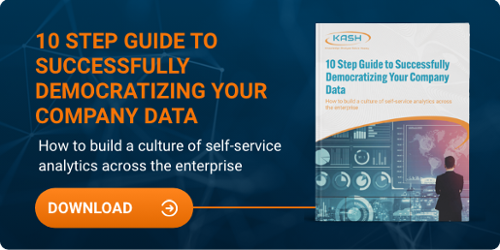Why Business Intelligence, Artificial Intelligence, and Data Science are Essential for your Business

Business Intelligence (BI) is more than just the procedural and technical infrastructure that collects, stores, and analyzes the data your company produces or acquires. These, and other elements, are critical components of your business intelligence eco-system but it must also incorporate an understanding of:
-
Who are you as a business entity?
-
What is your business purpose?
-
What drives the business?
-
What are the objectives of the company?
-
Who does the business serve?
-
What constitutes success for the business?
Before you can accomplish a next-generation business intelligence strategy, these critical business elements must be determined.
What is Business Intelligence (BI)?
There are four traditional levels of business intelligence, and each will play a role in a successful BI solution:
 Descriptive Analytics: collecting and organizing data into information that describes how the business is operating in the current state and proactively distributing that information to various audiences.
Descriptive Analytics: collecting and organizing data into information that describes how the business is operating in the current state and proactively distributing that information to various audiences.
Diagnostic Analytics: Incorporating pattern recognition into descriptive analytics allows the audience to "diagnose" why something is happening. For instance, if sales are declining in a given region, then diagnostic analytics can help you understand why.
Predictive Analytics: based on historical data, "predictive" analytics generates statistical models and applies those models to current activity to present possible future outcomes.
For example, let's say a business sells Christmas trees for the Holidays, and based on their data analytics, every year over the past five years, they have sold out of Christmas trees before the end of the season. Predictive analytics models can use this information to predict the outcome for future seasons, allowing the business to plan accordingly.
Prescriptive Analytics: provides the audience with solution options to the problem at hand, ranks those options for consideration, and provides a roadmap to improved business results. Prescriptive tells you what you can do in response to the prediction and how you can optimize business performance.
Using the earlier tree business as an example, if
the business uses business intelligence to uncover the data point of running out of trees before the season is over, and predictive analytics to assess the upcoming season, the company can take action to eliminate the issue. In addition, the business can optimize results by either increasing the prices of each tree to optimize the stock they have or increasing supply at the current price to meet the market demand.
BI also encompasses newer technologies, data sources, and concepts such as data science, artificial intelligence, machine learning, data mining, benchmarking, dashboard development, data visualization, and self-service.
These can significantly increase the utilization and accuracy of the information being delivered to various constituencies across your business enterprise and improve the value and the ROI of your Business Intelligence platform.
The Benefits of Business Intelligence

A successful BI solution is a best-of-fit for your business's people, processes, and technologies, providing a single source of the truth and delivering consistent actionable insights in real-time.
A BI solution focusing on these attributes will significantly benefit communication, collaboration, and trust and enable data-driven decision-making.
Is it worth it?
Yes! The right BI solution will result in improved products or services, new competitive advantages, and increased customer and employee satisfaction, market share, and profits. However, achieving this requires a thorough assessment of current issues in these areas and developing a coherent and inclusive strategy to establish a solid foundation for transforming your business analytics.
What are Artificial Intelligence (AI) and Machine Learning (ML)?
Artificial intelligence and machine learning combine the capabilities needed to observe, learn, communicate, make decisions, and perform. Like a child, artificial intelligence and machine learning must be taught about their environment, capabilities, constraints, and purpose. While AI is designed to emulate how our human brains interact with and collect data from the world, ML "teaches" the machine to learn through interaction with its environment, formulate a conclusion, and make decisions. Without this teaching, the full promise of AI/ML will remain unfulfilled.
Properly deployed AI/ML can process and analyze vast amounts of data faster than humans and produce actionable information (insights, conclusions, predictions, and recommendations) for the more nuanced decision-making that requires human intervention.
There are five critical elements to a successful AI/ML application (model):
- Clear and detailed definition of the problem to be solved.
- Define the correct input data, validate its accuracy, and ensure sufficient volume.
- Build the baseline mathematical instructions (algorithms) that the application will perform.
- Supply the input data to the application for training. Monitor the application output and validate results.
- Establish the proper feedback loop to the algorithm. This is where ML is leveraged to imitate how humans learn, thus constantly improving the accuracy of the application. The more data it processes, the more understanding of the problem it achieves and the more capable it becomes.
What are the Benefits of Artificial Intelligence and Machine Learning?
By utilizing AI and ML, all businesses can exponentially increase the value of their investment in a business intelligence solution. Of course, investing in business intelligence tools such as AI and ML is not critical, but greater value can be achieved if both are used.
Additional benefits to implementing artificial intelligence and machine learning are:
- Reducing costs by streamlining operations and eliminating manual processes
- Allowing the business to identify and capitalize on new market opportunities faster through accelerating decision-making
- Enhancing employee satisfaction by automating low-value activities, and focusing employees on higher value-added efforts
- Increased customer satisfaction and retention through improved products and services
- Increased ROI and profit
Do you know how to successfully implement AI and ML? Check out the article, "How to Adopt AI and Machine Learning to Transform your Business Intelligence" to learn more.
What is Data Science?
Data Science uses scientific methods, processes, algorithms, and systems to interrogate disparate, chaotic, structured, or unstructured data from any source to extract, extrapolate and construct information, knowledge, and insights that can be applied to expedite and enhance decision-making across the enterprise.
Data Science is most interested in five key areas:
Capture: acquisition, integration, ETL (Extract, Transform, Load), and data entry.
Maintain: data architecture, quality, and storage.
Process: data modeling, mining, clustering, aggregating, summarizing.
Analyze: explore, compare, predict, regression, and qualitative analysis.
Communicate: reporting, business intelligence, visualizing, trending, self-service, and decision-making.
Data Science Ensures Consistent, Accurate, and Timely Information

Common pain points in today's business environment include a lack of data accuracy, different answers to critical questions depending on who is asked, difficulty in accessing information, not choosing the appropriate bi tools for the application, relying on "gut instincts" to manage the business, declining customer satisfaction, falling market share, poor quality products, enterprise frustration, and falling profits.
These pain points result from how data is managed, converted into information, and shared across the enterprise.
So is Data Science a panacea for all your business problems?
Unfortunately, no. However, a sound data science approach to your business will ensure consistent, accurate, and timely information across the enterprise allowing all decision makers to have the confidence and trust in the information at hand to make sound and impactful decisions in a timely manner to benefit the business.
Developing a Successful Business Intelligence Strategy that Thrives
While these concepts and capabilities are compelling and can bring significant value to your business, you cannot approach these as a "Big Bang" and be successful.
Each of these will require changes and adaptation to fit your business's people, processes, and technology. Your business will also need to change to embrace and achieve the most significant value from these technologies.
The best approach to building a successful bi strategy is to find a partner to help you assess where you are today and decide where you want to go. Then, with those starting and end points defined and understood, the right partner will help you determine the best approach to realizing your goals and objectives and develop a realistic plan for success; also known as a Business Intelligence Strategy!
To learn how you can take the first step in developing a business intelligence strategy that works for your company, download the eBook, “A 10-step guide to successfully democratizing your company data.”
